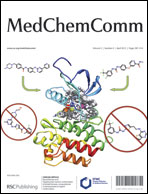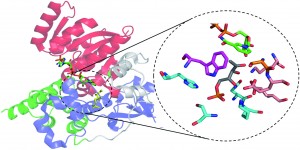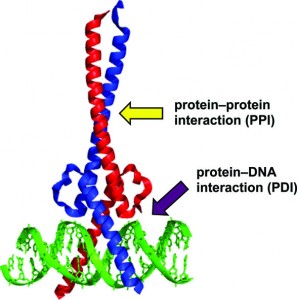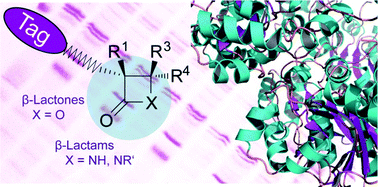This month sees the following articles in MedChemComm that are in the top ten most accessed:
Minisci reactions: Versatile CH-functionalizations for medicinal chemists
Matthew A. J. Duncton
Med. Chem. Commun., 2011, 2, 1135-1161
DOI: 10.1039/C1MD00134E
Antimalarial peroxides: advances in drug discovery and design
Rachel D. Slack, Alexander M. Jacobine and Gary H. Posner
Med. Chem. Commun., 2012, 3, 281-297
DOI: 10.1039/C2MD00277A
Structural enrichment of HTS compounds from available commercial libraries
Tetyana Petrova, Alexander Chuprina, Raman Parkesh and Alexei Pushechnikov
Med. Chem. Commun., 2012, Advance Article
DOI: 10.1039/C2MD00302C
Towards biocompatible nanovalves based on mesoporous silica nanoparticles
Ying-Wei Yang
Med. Chem. Commun., 2011, 2, 1033-1049
DOI: 10.1039/C1MD00158B
Polyamine-based small molecule epigenetic modulators
Shiv K. Sharma, Stuart Hazeldine, Michael L. Crowley, Allison Hanson, Ross Beattie, Sheeba Varghese, Thulani M. D. Senanayake, Aiko Hirata, Fusao Hirata, Yi Huang, Yu Wu, Nora Steinbergs, Tracey Murray-Stewart, Ian Bytheway, Robert A. Casero and Patrick M. Woster
Med. Chem. Commun., 2012, 3, 14-21
DOI: 10.1039/C1MD00220A
The discovery of novel 10,11-dihydro-5H-dibenz[b,f]azepine SIRT2 inhibitors
Paolo Di Fruscia, Ka-Kei Ho, Sasiwan Laohasinnarong, Mattaka Khongkow, Sebastian H. B. Kroll, Suhail A. Islam, Michael J. E. Sternberg, Karin Schmidtkunz, Manfred Jung, Eric W.-F. Lam and Matthew J. Fuchter
Med. Chem. Commun., 2012, 3, 373-378
DOI: 10.1039/C2MD00290F
The development of quinolone esters as novel antimalarial agents targeting the Plasmodium falciparum bc 1 protein complex
Robin Cowley, Suet Leung, Nicholas Fisher, Mohammed Al-Helal, Neil G. Berry, Alexandre S. Lawrenson, Raman Sharma, Alison E. Shone, Stephen A. Ward, Giancarlo A. Biagini and Paul M. O′Neill
Med. Chem. Commun., 2012, 3, 39-44
DOI: 10.1039/C1MD00183C
A comparative analysis of the molecular topologies for drugs, clinical candidates, natural products, human metabolites and general bioactive compounds
Hongming Chen, Ola Engkvist, Niklas Blomberg and Jin Li
Med. Chem. Commun., 2012, Advance Article
DOI: 10.1039/C2MD00238H
Inhibitors of Stat5 protein signalling
Abbarna A. Cumaraswamy, Aleksandra Todic, Diana Resetca, Mark D. Minden and Patrick T. Gunning
Med. Chem. Commun., 2012, 3, 22-27
DOI: 10.1039/C1MD00175B
From the protein’s perspective: the benefits and challenges of protein structure-based pharmacophore modeling
Marijn P. A. Sanders, Ross McGuire, Luc Roumen, Iwan J. P. de Esch, Jacob de Vlieg, Jan P. G. Klomp and Chris de Graaf
Med. Chem. Commun., 2012, 3, 28-38
DOI: 10.1039/C1MD00210D
Why not take a look at the articles today and blog your thoughts and comments below.
Fancy submitting an article to MedChemComm? Then why not submit to us today or alternatively email us your suggestions.
Comments Off on Top ten most accessed articles in January


![GA[7]](https://blogs.rsc.org/md/files/2012/04/GA7.gif)












 On the cover of
On the cover of  Thomas Böttcher and
Thomas Böttcher and